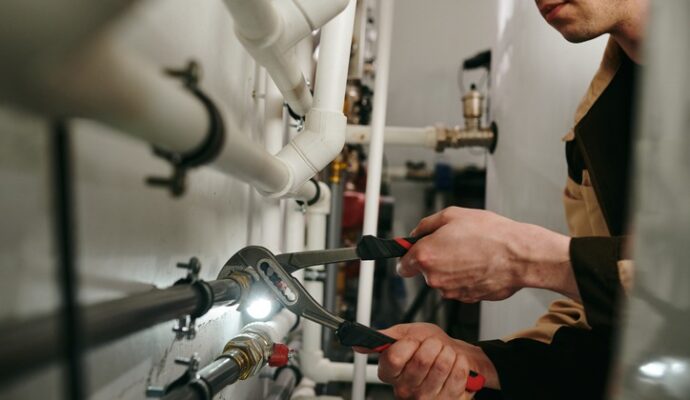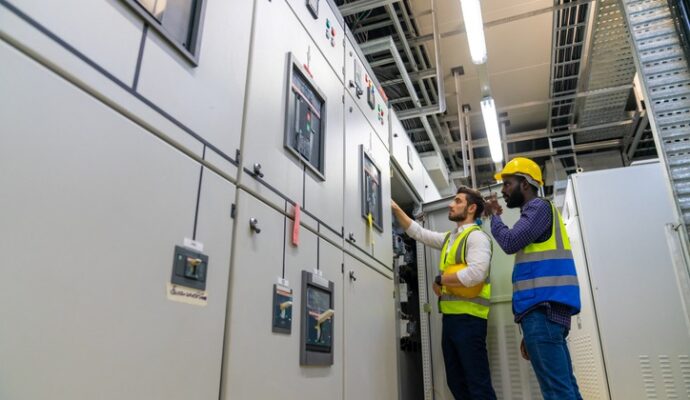Have you ever heard a faint drip or noticed a mysterious stain on your ceiling? Sometimes, the most troublesome plumbing issues aren’t obvious. Hidden plumbing leaks fall into this category—they sneak around in silence, working quietly behind walls, under floors, and above ceilings. By the time you see the signs, the damage might already be done. Let’s discuss what makes hidden plumbing leaks such a threat and how pros pinpoint their secret locations.
The Real Risks of Hidden Water Leaks
Ignoring those subtle leak signs isn’t just dangerous for your home—it’s harmful for your wallet, too. Here’s why hidden plumbing leaks deserve your immediate attention:
-
Structural Damage: Water that seeps undetected can rot framing, damage foundations, and even cause ceilings and floors to buckle or collapse.
-
Mold Growth: Damp and humid conditions caused by leaks provide the perfect environment for mold, which can damage your belongings and impact your health.
-
Sky-High Water Bills: Even a small hidden leak can add hundreds of dollars to your annual water expenses.
-
Pest Problems: Pests like termites are attracted to moist wood, making hidden water leaks an open invitation.
-
Decreased Home Value: Water damage can affect the resale value of your home and may complicate future sales or insurance claims.
Common Locations Where Plumbing Leaks Hide
Plumbing leaks rarely happen out in the open. They love the least accessible spots! Here are some classic sneak-attack locations:
-
Behind drywall and plaster in kitchens and bathrooms
-
Underneath sinks and around cabinet bases
-
Within basement foundations and crawl spaces
-
Inside ceilings below bathrooms and laundry rooms
-
Buried under yards, driveways, or slabs
The Subtle Signs You Might Be Missing
Hidden leaks don’t usually announce their presence with gushing water and puddles. Instead, they drop hints you might easily overlook. Keep an eye (and ear) out for these:
-
Unexplained water stains or rings on the ceiling or walls
-
The constant sound of dripping or running water
-
A musty odor in certain rooms or closets
-
Warping, bubbling, or blistering paint and wallpaper
-
Sudden drops in water pressure
-
Consistently damp or hot spots on floors
-
Increases in your monthly water bill for no obvious reason
The Hidden Health Hazards Associated with Leaks
One of the most troubling aspects of hidden leaks is their impact on your family’s health. Persistent dampness can foster mold and mildew growth, releasing spores that travel through the air. Exposure can cause:
-
Headaches and allergy symptoms
-
Aggravation of asthma and respiratory issues
-
Fatigue and eye irritation
-
Potential long-term effects on the immune system
If you or your loved ones have noticed more sneezing, wheezing, or unexplained illnesses, it might be time to hunt for hidden plumbing leaks.
What Causes These Stealthy Leaks Anyway?
Not all leaks are the result of sudden, dramatic events. Many happen gradually due to:
-
Old pipes and fittings: Over time, materials corrode, rust, or wear out.
-
Excess water pressure: Too much pressure can stress and fracture plumbing systems.
-
Shifting foundation: Natural earth movement can dislodge or crack pipes running through slabs or walls.
-
Improper installation: Hasty or amateur work can lead to loose joints and future leaks.
-
Extreme weather: Freezing temperatures can cause pipes to burst as water expands.
-
Tree roots: Roots searching for water can invade and break underground lines.
How Professionals Uncover Hidden Leaks
Professional plumbers rely on a variety of clever techniques to catch hidden leaks in action. Let’s break down the most common detection strategies:
1. Visual Inspection
It starts with a trained eye. Pros look for staining, warping, swelling, or discoloration in areas most prone to water leaks. They’ll check cabinets, under sinks, and around water heaters for signs you might have missed.
2. Moisture Meters and Infrared Cameras
These noninvasive devices measure moisture levels inside walls and under floors. Infrared cameras capture heat differences—wet spots often reveal themselves as “cold” patches compared to dry areas. This method can pinpoint leaks without tearing open your walls.
3. Acoustic Leak Detection
Listening devices help pros hear the sound of water escaping pressurized pipes. Even behind thick surfaces, these machines amplify telltale “hiss,” “drip,” or “gurgle” noises that betray a leak’s exact location.
4. Pressure Testing
By temporarily shutting off your home’s water supply and pressurizing the plumbing, a technician can identify pressure drops that signal a leak and then isolate the affected section.
5. Video Pipe Inspection
Tiny waterproof cameras snake into pipes and ducts, giving technicians a first-person view of blockages, breaks, or slow leaks deep within your system. No more guesswork or unnecessary digging!
When to Call for Professional Help
If you suspect a leak but can’t find the source—or if you’ve noticed repeated water damage—don’t wait. An early call to a pro can save your home from major repairs and spare you from health hazards or soaring bills down the road.
Thinking Beyond the Leak
Other plumbing services might benefit you in tandem with leak detection. For example, when getting a bathtub and shower installation in Tomball, TX, it’s the perfect time to have a plumber inspect nearby pipes for any hidden weaknesses or existing leaks before sealing everything behind new tiles and fixtures.
Why Early Detection Matters
Catching leaks early means easier repairs, less property damage, and minimized costs. Regular plumbing checks and fast leak response keep your home safe, clean, and protected. Here are a few reasons to act fast:
-
Minimize structural repairs and keep insurance premiums low
-
Avoid extended mold remediation or costly restoration work
-
Maintain your home’s aesthetic value and resale potential
-
Keep your utility costs predictable month after month
Steps to Prevent Hidden Leaks
While not every leak is avoidable, these tips will lower your odds:
-
Schedule annual plumbing inspections for your home, especially if it’s older
-
Know where your main water shutoff valve is and how to use it
-
Insulate exposed pipes during winter to prevent freezing
-
Avoid using chemical drain cleaners that can weaken pipes over time
-
Watch your water pressure—too high can limit pipe life
-
Promptly repair any leaks you discover, no matter how minor they seem
Making Smart Choices with Reliable Help
It’s not just about leak detection — a skilled professional can help with everything from advice to full repairs. If your pipes show signs of hidden trouble or if you want long-term confidence in your home’s plumbing, don’t hesitate to invest in high-quality plumbing and drain repair. Qualified plumbers can fix problems and fortify your system for the future, giving you peace of mind.
Beyond Leaks—Regular Maintenance is Essential
Hidden leaks often grow out of small issues that regular maintenance would have caught. Schedule periodic check-ups, keep your plumbing clear, and address any slow drains or clogs immediately. If your drains are giving you trouble, click here for drain cleaning services to keep everything flowing smoothly and prevent water from backing up—a key cause of stealthy leaks.
Final Thoughts
The dangers of hidden plumbing leaks are real, and ignoring them can have wide-reaching consequences for your health, your safety, and your finances. While you can always keep an eye out for warning signs, remember that professional plumbers have the skills and tools to chase down sneaky leaks with pinpoint accuracy. Early detection is the single best way to protect your home and avoid costly repairs. Stay proactive, and never hesitate to get expert help when your home’s plumbing needs it — your future self will thank you!




